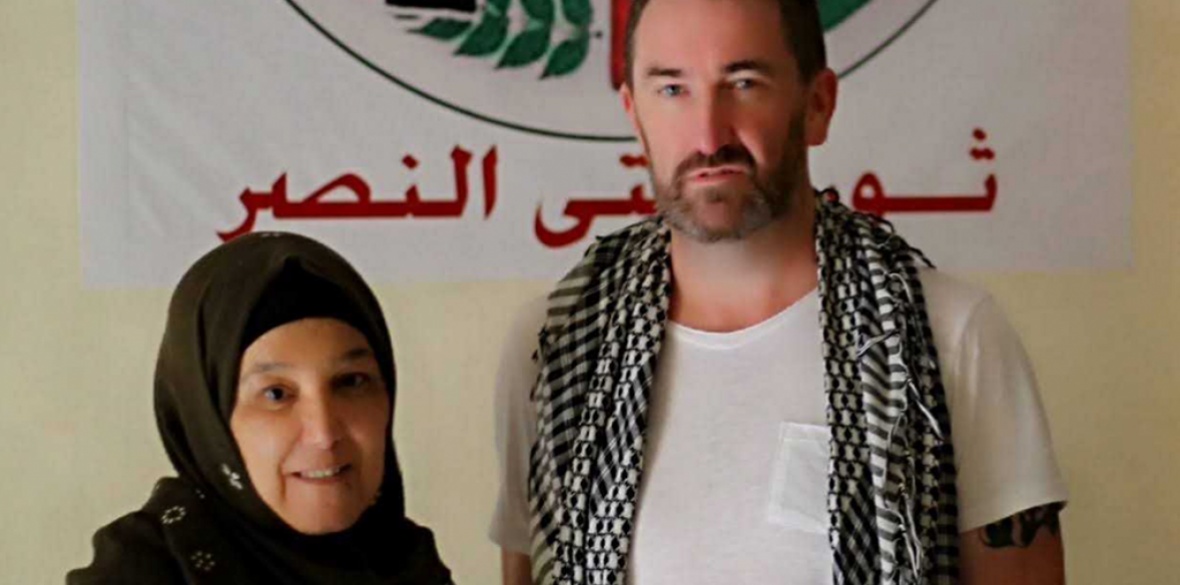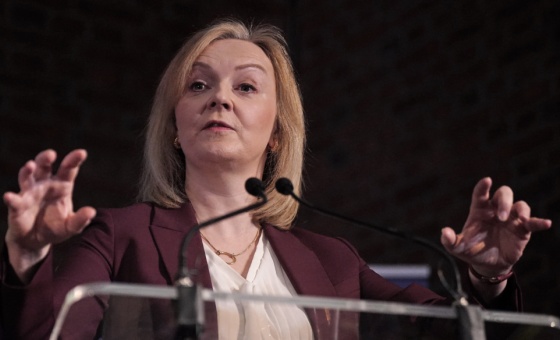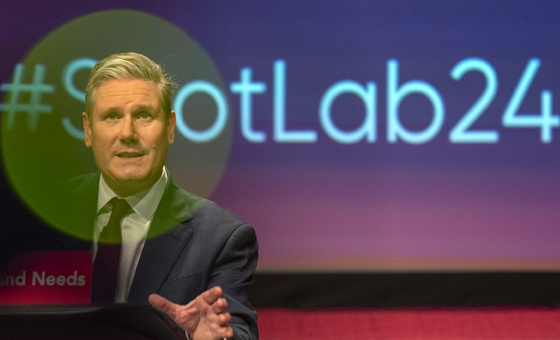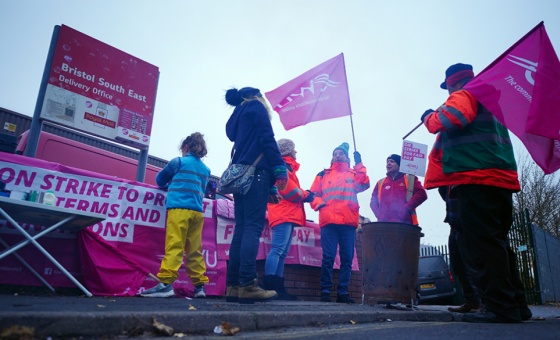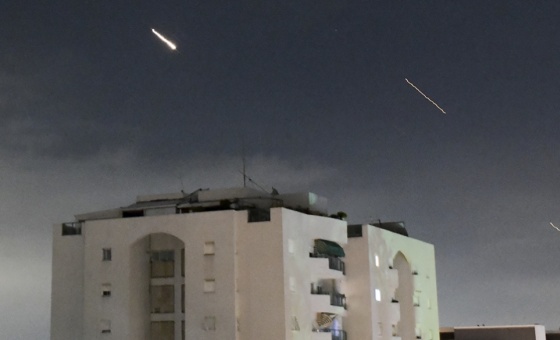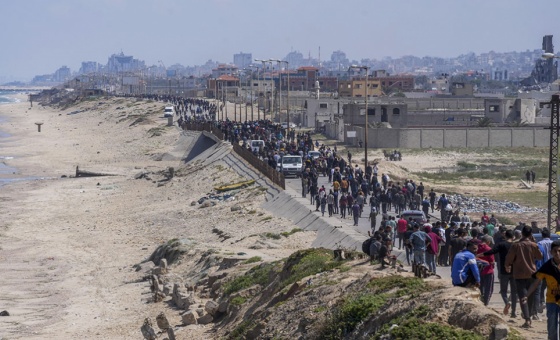This is the last article you can read this month
You can read more article this month
You can read more articles this month
Sorry your limit is up for this month
Reset on:
Please help support the Morning Star by subscribing here
“THIS is not history for us,” Zeinab al-Hajj says as she grabs my arm. “We need journalists like you to tell our story, to keep the memory alive and make sure this never happens again.”
Zeinab is responsible for media relations in the Shatila Palestinian refugee camp, built in 1949 as a temporary site but now home to up to 22,000 people in the southern suburbs of the Lebanese capital Beirut.
Nearly 40 years ago today, it was the scene of a massacre in which thousands of men, women and children were brutally murdered in a depraved three-day killing spree by Christian Phalangist militias, with the co-operation of Israeli forces.
“Five generations are still living the war,” Zeinab continues, repeating: “It is not history for us: this is the same war every day. Every story has an end, but our story has no end.”
We are in a building belonging to Fatah, the governing party of the Palestinian Authority. Photos of the late Yasser Arafat adorn the walls, along with f other fallen leaders of the liberation struggle.
It is not only Fatah that is present in the camp. All the Palestinian factions are represented, their posters pasted on the same walls where men, women and children were lined up and shot in September 1982.
Estimates vary as to the number killed by the right-wing Christian militia, who claimed to have entered the camp to flush out the remaining “terrorists” of the Palestine Liberation Organisation (PLO), accused of creating “a state within a state” in Lebanon.
The late Robert Fisk, one of the first journalists to enter the camp after the killings, reported: “After three days of rape, fighting and brutal executions, militias finally leave the camps with 1,700 dead.” Others, including the Lebanese Red Cross, numbered the dead at 3,500.
The exact total may never be known as Israeli-supplied bulldozers moved swiftly into the camp, dumping decaying corpses into mass graves that were later hit by bombs.
What isn’t in doubt is that what happened in Shatila and the neighbouring Sabra district over the three days was a genocide — the United Nations general assembly confirmed it as such in December 1982.
There were no Palestinian fighters in the camp at the time of the massacre — the Phalange and the Israeli forces who ushered them in knew this, since the PLO militia had left for Tunisia two weeks earlier under a UN-brokered truce.
The victims were mainly women and children, many found in their own homes, their skirts above their waists, legs apart, having been raped before they were executed.
After the Phalangists had finished their orgy of killing, the bodies of dead children littered the streets like discarded dolls, bullet holes in the back of their heads.
Nohad Srour was just 11 when she arrived at Shatila. Her family were among the million Palestinians driven from their homes during the 1948 Nakba, when the state of Israel was created. Like many, she dreams that one day she will return to a homeland she has never seen.
Nohad was born in a camp in Tyre, in southern Lebanon, close to the Palestinian border. Her father had been a Fatah fedayeen, a member of a Palestinian militia organised by the PLO and known as “the daring heroes of the Arab world.” He had trained in Jordan, where many PLO fighters were based until they were driven out after Black September, a war between the fedayeen and the Jordanian armed forces in 1970-71.
The family fled Tyre in 1978 after Israel began bombing the camp and made their way north to Shatila, one of 12 refugee camps in and around Beirut.
The attack came during an Israeli invasion of southern Lebanon; it was the first time that Nohad saw a dead body, a neighbour “with her intestines blown out.” Sadly it would not be the last.
As the did later, in 1982, the Israeli forces claimed to be moving against the PLO, which was using the region as a base to launch attacks as part of the liberation struggle.
She likens being driven out of the camp to “a second Nakba” — she had to leave behind friends, family and her school — but she says her childhood was a happy one, despite the cramped conditions in Shatila, where 12 people shared just two rooms.
Nohad dropped out of school, struggling to adapt to classes taught in English; in the Tyre camp, lessons had been in French, which she was able to speak with a degree of fluency.
As she wasn’t in full-time education, she wasn’t surrounded by children of her own age, but she did become friends with two girls she recalls fondly. Her eyes sadden as she tells me they were both killed by the Phalangists, one in a way almost too horrific for words.
“My friend was hung from a tree by her breasts and had been stripped naked. They raped her before she was shot. She was only 11 or 12,” she says tearfully.
“Many were raped before they were killed in the main streets of the camp. These people were animals,” she snaps angrily, my rudimentary Arabic not requiring her words to be translated.
Beirut was a city under siege in the build-up to the massacre, with Israeli warships blockading the port and firing frequently into the western part of the now-divided city. The bombardment even destroyed a synagogue that was being guarded by the Palestinians.
Nohad says that, despite the ongoing war, life in the camp was bearable. But when Phalangist leader Bashir Gemayal was assassinated just 14 days after becoming Lebanon’s president, “everything changed.”
He was killed by a car bomb on 14 September outside the offices of his Kataeb Party in Beirut’s predominantly Christian Achrafieh district. The party — falsely — blamed the PLO for Gemayal’s demise and it gave the Phalangists the perfect excuse to move into the camps and exact retribution.
“There was gunfire near to the camp,” Nohad says as she recalls the morning before the massacre began. “A bullet entered our house and we realised that it came from a sniper who was watching from the top of a building.
“First of all, we thought it was the Israeli army, as they were blockading the camp. They were circling the camp, they said, to try to capture any remaining [PLO] fugitives.
“We thought that they would not be interested in women or girls, just those that are able to fight. But we were wrong,” she says.
They didn’t expect “anything big” to happen during the day — there were no Fatah fighters in the camp and they felt relatively safe. “We weren’t afraid until after sunset. Then the camp was lit up by flares — we think fired by the Israeli soldiers at the entrance. Then we knew something bad was coming,” Nohad says.
At this stage, many families fled, frightened for their lives. But at night, the snipers started shooting at anything that moved, so Nohad’s family felt unable to leave, despite pleading with their father. Her younger brother, fearing he may be targeted, made his way to the camp’s main medical facility, where he thought he would be safe.
Nohad’s sister was the first of the family to discover the gravity of the situation when she left the house to check on a friend. She returned terrified, having seen piles of dead bodies and hearing a plea for help from someone still alive among the corpses.
The family gathered together that night and invited their next-door neighbour Leyla to stay with them. “She was pregnant and alone because her husband had left the camp with the other Fatah fighters. Leyla was Lebanese,” Nohad said. “She slept in the same room as me.”
“When the morning came, my brother Nidal and my sister and Leyla heard noises in the neighbours’ house. They found a group of militiamen who shouted at them to get down.”
Nohad says they were horrified when they heard the fighters speaking in Lebanese Arabic — they realised that they were Phalangists. “This made us more afraid because they hate Palestinians,” she said.
The militia arrived at their house and the family hid in the narrow hallway behind their father, who told them not to be afraid.
“I can still recall the face and the voice of the man at the door,” Nohad says. They asked her father if he was a member of Fatah and began searching the house.
She was holding her 14-month old sister as they barged in and shouted at them to leave the family alone, as they were civilians. The soldier said they were under orders.
They were made to line up against the wall of their living room, Nohad says. She becomes tearful as she imitates the noise and action of a machine gun. I didn’t need to wait for the interpreter to tell me what happened.
The soldiers tried to rape her and her sister. Another man entered the house, asking the soldier why they had not been shot yet. “So he took the machine gun off him and shot the whole family. Many were killed, my father, my sister…”
Nohad’s mother was shot in the back and injured. Her baby sister was hurt and calling out for her mother. “They put her on the ground, she took two steps and then fell down dead,” she says.
Leyla suffered a horrific fate. After the soldiers raped her, they cut open her stomach and pulled her unborn baby out, nailing it to the wall. Then they executed her.
Speaking to a member of a Israeli tank crew on the second day of the massacre, a Phalangist sought to justify such depraved actions by saying: “Pregnant women will give birth to terrorists — the children when they grow up will be terrorists.”
The massacre of Sabra and Shatila provoked global outrage and Israel commissioned an investigation that led to its 1983 Kahan report.
It found that responsibility for the killings lay with the Phalangists and that the Israeli forces, despite knowledge of what was happening inside the camp, were only “indirectly responsible.”
Israeli defence minister Ariel Sharon was found to bear “personal responsibility” for ignoring the bloodshed and, following mass protests in Tel Aviv, he resigned. However, he was later elected prime minister.
Zeinab says that, nearly 40 years later, the Palestinians have no justice and are “still living that story.”
She says they were abandoned to their fate by the multinational peacekeepers stationed in Lebanon, who had promised to protect the camps once the PLO left. “As soon as Arafat left, we were betrayed by the international forces and the Israelis,” she says.
“To prevent another massacre, we need self-defence – this is why we continue to carry our own weapons. It is a must as we don’t know when something like this will happen again.
“We are expecting more pain. We will continue our resistance to the [Israeli] occupation, but we will pay the price,” Zeinab continues. “All we want is our right to return. Palestine is our home and we will return,” she says hopefully.
Steve Sweeney is the Morning Star’s international editor.

